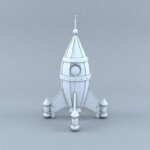Unlocking manufacturing potential: The efficiency revolution of CNC steel cutting
In the heartbeat of modern manufacturing, steel remains a Titan – powerful, versatile, essential. However, unlocking its potential depends on one critical process: cutting. Gone are the days of slow, inaccurate manual methods. Today, computer numerical control (CNC) processing, especially complex Five-axis CNCwith redefined steel manufacturing, delivering unparalleled efficiency, accuracy and adaptability. For industries requiring complex geometric shapes and flawless finishes, such as steel, mastering CNC cutting is not only an option. Competitiveness must be maintained.
Why CNC is the cornerstone of modern steel manufacturing
Traditional cutting methods (plasma, oxygen fuel, manual processing) fight against the strong nature of steel. Challenges such as reduced quality inconsistency, excessive material waste, slow throughput and difficulty in achieving complex shapes. CNC machining can solve these problems in the following ways:
- Accuracy and repeatability: The CNC system converts digital design (CAD/CAM) into precise tool paths. Tolerance is easily achieved with tolerances of ±0.001 inches (0.025mm) or higher, complex contours, sharp corners and harsh hole patterns are perfectly copied after batches. This eliminates setup errors, greatly reduces rework, and ensures that each section matches the specifications perfectly.
- Minimized material loss: Optimized nested software (an integral part of CNC programming) strategically arranges parts in stock of raw steel, thus greatly reducing waste. This translates directly into cost savings, especially with the use of high-value steel alloys.
- Top surface finish: Precise tool control and optimization of cutting parameters can result in cutting with minimal burrs or thermal distortion cleaners compared to thermal processes. This usually reduces or even eliminates secondary finishing steps.
- Complexity enables: CNC machining (especially 5-axis) handles complex 3D geometry, undercut and composite angles in a single setup that was previously impossible or expensive to use traditional methods. Designers enjoy unprecedented freedom.
Five-axis advantage: raise steel to new heights
Although 3-axis CNC is powerful, Five-axis CNC machining Unleashing a transformative leap in the efficiency and capability of steel components:
- Single-game dominance: The ability of cutting tools to approach the workpiece from almost any angle at the same time means that highly complex parts can be clamped in one go. This reduces the set time, eliminates cumulative alignment errors, and greatly accelerates the production cycle.
- Enhanced tool access: Turbine blades, deep cavity, complex impellers – Five-axis machines are easily manipulated around obstacles, thus entering areas that are simply not accessible to the 3-axis machines. This eliminates complex fixation or multiple settings.
- Excellent surface quality and speed: Optimized tool orientation maintains optimal cutting angles, reduces tool chats, extends tool life, allows for higher feed rates (reduces machining time), and provides excellent finishes directly from the machine.
- Delivery time: Combining a single set of machining with faster cycle times significantly reduces the time from CAD design to finished steel parts. Rapid prototyping and production scalability become a reality.
Material versatility conforms to application breadth
Modern CNC steel cutting conforms to highly complex prototypes and complex production hardware in various industries:
- Aerospace and Defense: Landing gear gear assembly, structural bracket, and engine bracket require extremely high accuracy and strength.
- Cars and Motorsports: High performance transmission parts, custom suspension components, lightweight chassis components.
- Energy generation: Turbine components, complex brackets for oil and gas, heat exchanger parts.
- Medical: Surgical instrument components, specialized tools, implantable device housings, requiring biocompatibility.
- Industrial Machinery:
- A powerful framework
- Precision gears
- Complex hydraulic valve body
- Custom fixtures and fixtures
Choose your CNC partner: In addition to basic cutting
For mission critical steel components, just have CNC is not enough. Working with experts who provide real manufacturing solutions is key:
- Advanced Technology: Leading providers invest in the latest multi-axis machining centers with high stiffness to handle hard steels, high-speed spindles and sophisticated software for optimal tool paths and simulations.
- Engineering expertise: Deep metallurgical knowledge ensures optimal tool selection, cutting speed, feed and coolant strategies for quality, accuracy and efficiency while extending tool life.
- Material mastery: Find extensive experience in ordinary processed alloys (tool steel, stainless steel-304, 316, 17-4PH, alloy steel-4140, 4340) to understand the impact of stress reduction and heat treatment.
- Seamless workflow: True partners provide end-to-end services: design consulting, material procurement, CNC machining, precision grinding, heat treatment coordination, surface finishing (electroplating, anodizing, powder coating, polishing) and metrology – providing true conversion solutions.
Conclusion: Redefinition of efficiency
CNC steel cutting, especially the function of five-axis technology, fundamentally destroys possible obstacles to steel manufacturing. It represents a paradigm shift to almost unlimited geometric complexity, razor accuracy, minimal waste and a dramatic accelerated production schedule. For innovators and manufacturers pushing boundaries in the field, steel components require the highest performance and reliability, with advanced CNC machining more than just cutting metal; it’s about cutting costs, delivery times and unlocking the full potential of their design. By leveraging cutting-edge technology combined with deep engineering acumen and end-to-end service, skilled manufacturers empower the industry to be stronger, smarter and more effective than ever.
FAQ: CNC Steel Cutting Explanation
-
Q: What are the main types of materials suitable for CNC steel cutting?
Answer: The CNC processing range is very wide, especially carbon steel, alloy steel (4140, 4340, etc.), tool steel, stainless steel (304, 316, 17-4PH, 416), engineering tool steel and hardened steel. Modern tools and powerful rigid machines effectively handle many alloy grades.
-
Q: How to reduce lead time for five-axis machining compared to three-axis?
A: The main time saving comes from eliminating multiple settings. Complex parts usually require multiple orientations and clamping on a 3-axis machine. This eliminates setup/disassembly time, reduces the cost of fixtures, and avoids potential alignment errors. It can often be cut through strategies faster with better tool access.
-
Q: Can CNC machining achieve the tight tolerances required for precision steel components?
Answer: Absolute. This is one of its key advantages. CNC machining, especially in rigid multi-axis centers and advanced process control, always achieve tolerances within ±0.001 inches (0.025mm), and even tighter critical dimensions. Environmental control and metrological verification play a crucial role.
-
Q: Is CNC cost-effective for prototyping and production operations?
A: Yes. For prototyping, CNC provides rapid iteration based on digital models without expensive molds. For production, especially complex parts or medium-volume, CNC speed, repeatability, reduced scrap and minimal tooling costs, it often makes it highly economical compared to other methods that require special molds or extensive finishes. Large quantities of parts may be stamped or cast.
-
Q: What surface finishes can I expect to process steel parts?
A: CNC milling provides standard quality milling effects. Fine machining parameters will produce a smoother finish. Dedicated secondary finishing, such as grinding, polishing, bead blasting or vibrating tumbling, can achieve accurate surface roughness (RA) values. Excellent initial finish minimizes secondary work.
-
Q: How to deal with complex internal features or deep cavity?
A: High power spindles and specialized Changshan tools solve the deep cavity. For internal threaded holes or complex geometry, engineer-specific strategies utilize CNC capabilities in combination with tool protection capabilities. For complex internal functions often considered unyielding manufacturing problems, five-axis machining provides solutions that are inaccessible by traditional methods.
- Q: What are the advantages of using a provider that provides full post-processing?
A: Procurement of manufacturing activities from an expert provider simplifies communication, ensures seamless process integration, ensures quality control, minimizes lead time, reduces logistical complexity, provides unique finishing strategies that greatly reduce overall project risk and accelerate delivery.
Leverage today’s future of steel manufacturing, unlock the accuracy, efficiency and capability by adopting advanced CNC solutions.

















